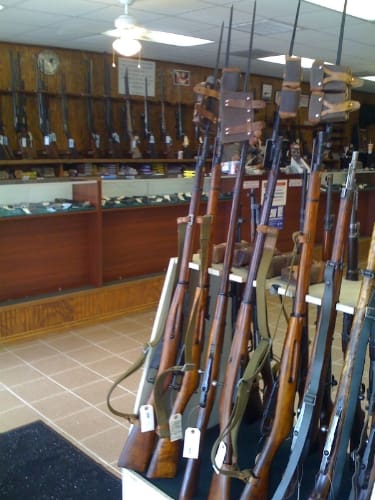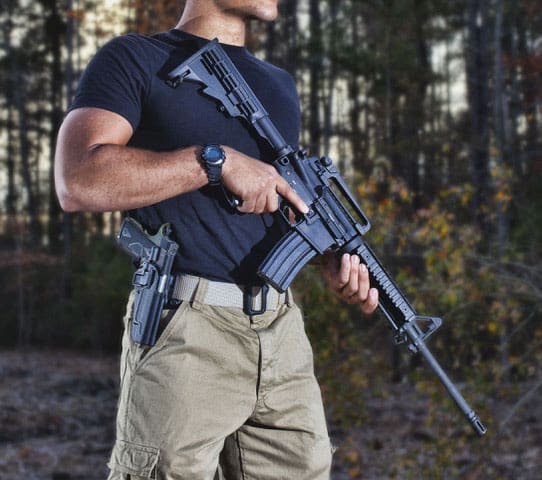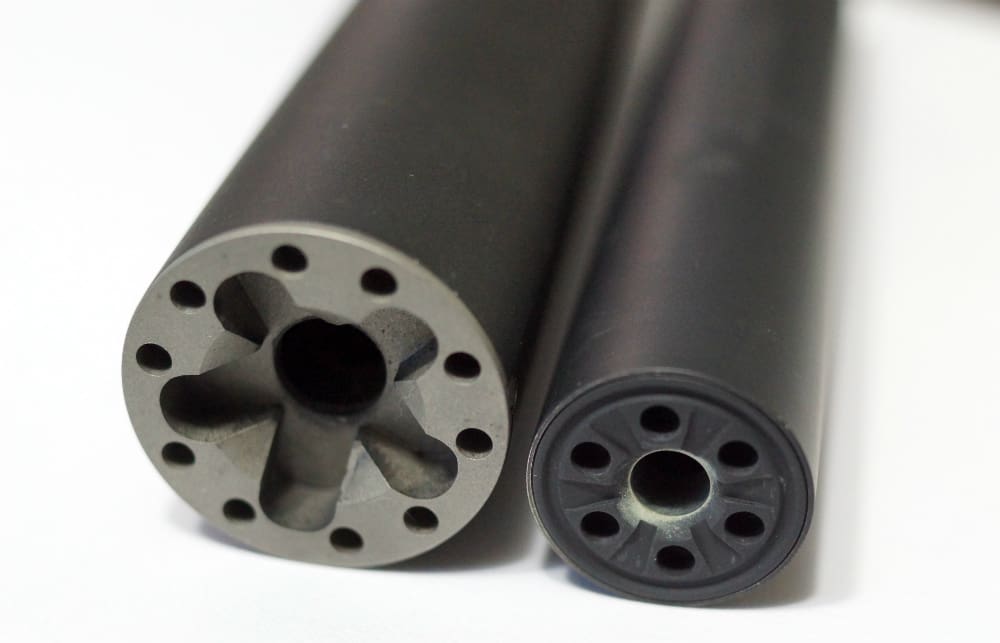Gun safety rule number one: treat every gun as if it’s loaded. Unfortunately, most gun owners—and even firearms professionals—take that to mean “always unload your gun.” That ain’t it. Treating your gun as loaded means always following rule number two: never point your weapon at something you don’t want to destroy. Like, say, your hand. To wit: “A gunsmith at a League City [Texas] gun shop lost his pinkie when a handgun mistakenly thought to be unloaded went off.” Note: the “handgun . . . went off.” Not “when the gun store employee shot himself in the hand.” Anyway, you might wonder, how’d that happen?
A Friendswood man told police that he had brought his 9 mm Smith and Wesson handgun to the store to have a gunsmith look at it.
The gun owner told police that he never carries his weapon with a round in the chamber and checked to make sure it was unloaded.
The gun owner said he took the pistol out of his holster at the store and removed its magazine before handing it to a woman who worked at the store, Jordan said.
Both the gun owner and the employee told police she too checked the gun and didn’t think it was loaded, Jordan said.
While she was off helping another customer, gunsmith James Howell took the gun to look it over. He pulled the gun’s slide back to make sure it wasn’t loaded and then put its magazine back in the weapon, the gun owner told police. While the two were talking, the gun fired and a bullet struck Howell in the left hand, severing his little finger.
“Basically, the gunsmith somehow or another loaded a round back in to the chamber,” Jordan said.
Ya think? If we believe this report by ultimateclearlake.com, Mr. Howell put a loaded magazine into the gun and released the slide, chambering a round. Oops! Old habits die hard. Not so pinkies.
Taking a magazine out of the gun is an important step in the process of clearing the weapon. But it merely reduces the chances that it’s loaded. It does not eliminate them.
By the same token, the moment you put a magazine into an unloaded gun it becomes a loaded gun. Safety says you have to assume the magazine has bullets; and the bullets are now in the gun. Close the chamber and it’s ready to blow your hand off (or worse).
Until you remove the magazine, clear the chamber (again) and then check the chamber (again), it’s a loaded gun.
But the magazine was empty! In this case, obviously not. Less obviously, it pays to remember that your magazine is not the only magazine that fits in your gun. There are thousands if not tens of thousands if not millions of magazines just like yours out there. Some of them may have bullets in them. And those magazines could be closer that you think.
In other words, how do you know the “empty” magazine was YOUR magazine? And are you sure you didn’t rack the slide and chamber a round out of habit? Maybe someone else (or you) left a round in the chamber before you put your empty magazine into the gun. If it’s physically possible, it’s mathematically probable.
Approaching the magazine component of the gun safety equation in any other way is unsafe, in the sense that giving a babysitter a tab of LSD before you leave for the night is inadvisable.
Another technical point. When you’re holding a gun, you’re the owner. The safety of that gun is your responsibility, and no one else’s. I repeat, you hold it, you own it. That’s on top of the fact that you are responsible for all your guns, even when you hand one to someone else.
That’s a lot of responsibility, eh? Deal. And as you assume that burden remember that the two most meaningless words in the English language are “It’s unloaded.” No gun is ever unloaded, even when it is. I will never forget the idiot at the range who swung a big ass Desert Eagle in my direction and then reassured me that “It’s unloaded.”
As a general rule, I check a gun’s chamber and magazine well every single time I touch the weapon. If the gun leaves my loving embrace even for a second, I check it again when I pick it up. If I hand it to someone, and they hand it back, I check it. Even if I’ve watched them handling it.
I wouldn’t counsel someone to wake up in the middle of the night to check if their weapon is unloaded (so to speak). But I reckon that a fair to middling case of OCD is OK in the gun-handling department. Especially if, say, you’re a gunsmith.
At the same time, one must follow Clint Eastwood’s dictum: a man must know his limitations. Memory is a weak link in any man’s mental chain.
Keep in mind (if you can) that your brain must deal with the present at the same time as it’s trying to recall the past. If you’re in a high-stress situation (e.g. any environment that includes firearms), your memory will be the first thing to go. I’ve seen first time gun shop customers struggle to remember their own name for the relevant forms. Seriously.
That’s before we talk about distractions. How easy is it to get distracted? Let’s say someone left a copy of Sports Illustrated’s Swimsuit Issue on the counter of the gun shop. Or the aroma of a freshly baked apple pie wafts in through the door. Maslow’s hierarchy of needs is not always your friend.
The only safe way to handle a gun is to treat it as if it’s loaded. You know it’s unloaded? No you don’t. Because it’s never unloaded. It’s always loaded. Period.
If you’re dry firing a gun, if you’re checking the trigger pull, always point the gun in a safe direction. (That’s one reason I bought a Springfield XD-M: you don’t have to pull the trigger to field strip the gun. I mean, why would you want to do that?) Consider the location of people upstairs and downstairs AND in nearby houses (aiming at the corner of your own house is safer than a wall).
Aiming a gun at your hand? I did it for a fraction of a second during some recent training, practicing my holster draw with David Kelnik. Mr. Armed Response informed me of my mistake in no uncertain terms.
Texas gunsmith James Howell should have known better. He should have known that knowing better means you know that never really know if a gun;s loaded. When it comes to gun safety, you simply can’t hand that responsibility to anyone else. So to speak.




